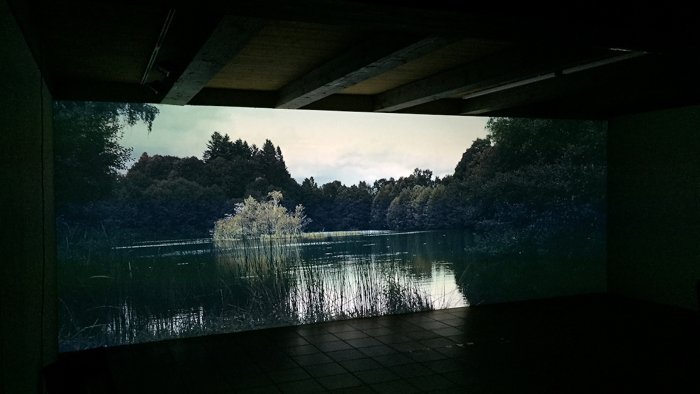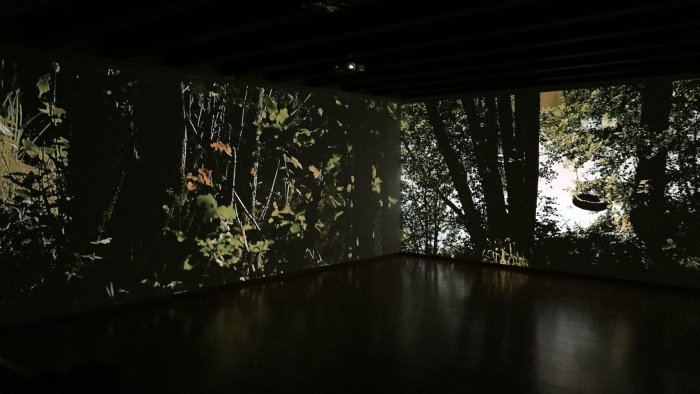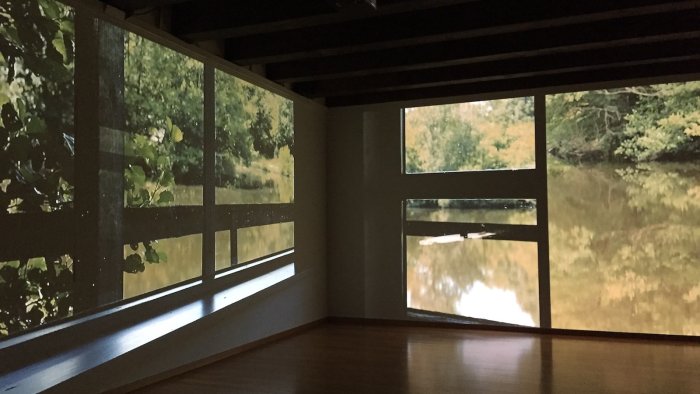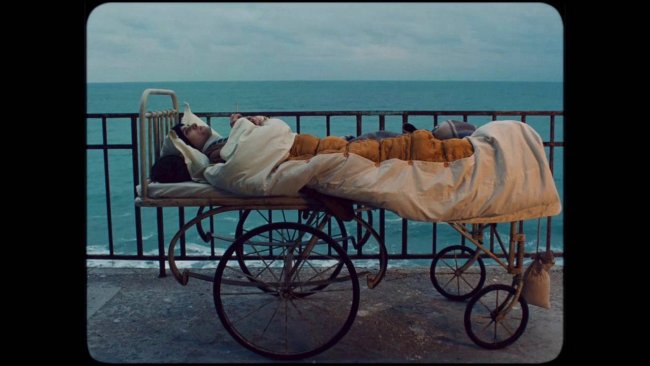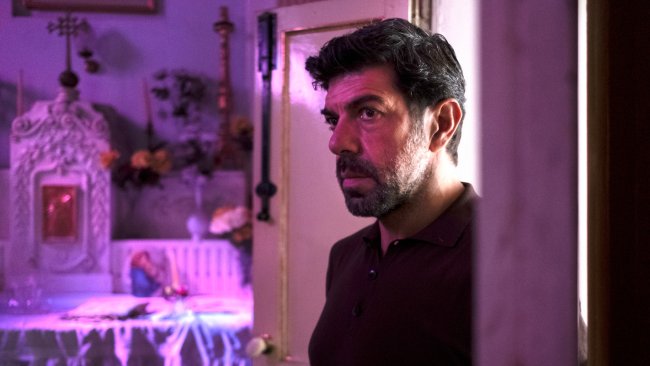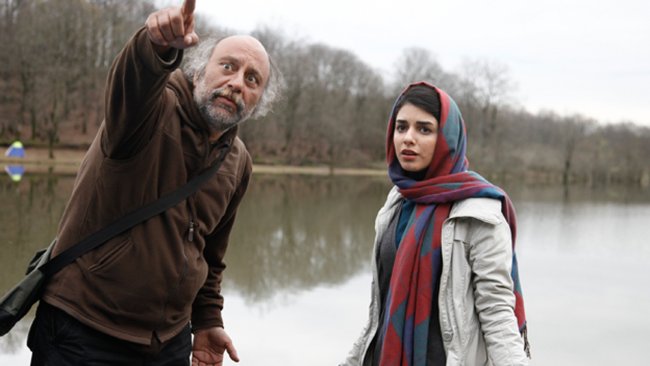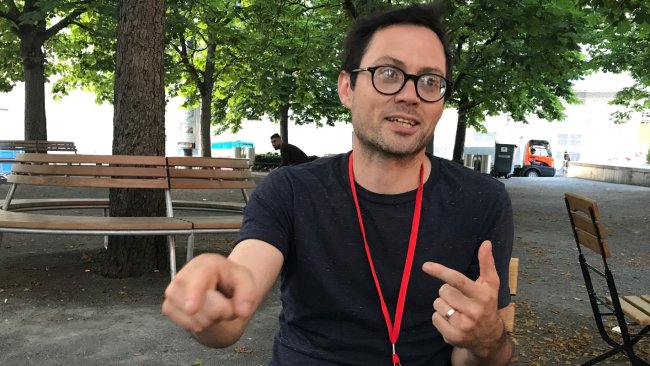Edith Flückiger | Weite Zeit
[…] Flückiger plays with a specific transparency of the filmic installation, which tends to coincide with the architecture of the exhibition space.
[…] Through our own wandering and introspectiveness, we are both the makers and visitors of the giant perceiving body of the house. It is in this ambivalence that time necessarily expands – “weite Zeit”.
[…] The way that Flückiger plays with the architecture of Benzeholz is not only a formidable reflection on the function of the black box – therefore also on the “institution” of cinema –, but it also introduces us to the old question of the homunculus, the perspective of someone observing the interiority, possibly her/his own interiority.
Text: Giuseppe Di Salvatore
Weite Zeit: we could translate the title as “expanded time”. There is a path to take however before we enter this expanded time; a spatial path, coinciding with the spatial experience we have in the Raum für zeitgenössische Kunst Benzeholz: the “space” for contemporary art at Meggen. This space is comprised of three floors, for which Edith Flückiger has created three site-specific audio-video installations.
In the first room, images and sounds give us the impression we are entering a sort of wooden fish house – and Benzeholz was actually a fish house at one point… – on a lake surrounded by trees. Wood, leaves, wind and water are the main elements that entirely “inhabit” the fish house, which serves as point of view for the audience. More than a trompe l’oeil, the audio-video installation at Benzeholz works as a “trompe le corps entier” for the entire body and its perception: Flückiger plays with a specific transparency of the filmic installation, which tends to coincide with the architecture of the exhibition space. In this way we experience a reconfiguration of the divide between the internal and the external; through the filmic superposition, the walls of Benzeholz are, in a way, projected onto its “lake-side” internal wall.
This spatial experience is expanded on the first floor. Three walls are used for a three-channel video installation, adding a voice-over to the images and sounds, which speaks about the relationship between the internal and external. This relationship is the object of introspection; the entire architecture of Benzeholz is “digested” through this introspective labour. The last floor is darker than the other two, for we have no more images but only a sound installation that we can experience only through headphones. In this way, we are encouraged to shut our eyes and listen to a soundtrack that is very similar to the ones we have already heard: the sounds of nature and its projections surrounding the fish house. It is the experience of echoing memory and the accomplishment of a rising path into our interiority, where the external vibrations of nature paradoxically take even greater importance. In fact, there is no paradox in this climax but there is only the overcoming of that divide between the internal and external into a fusion of the two and a confusion between them.
This mental accomplishment of the spatial experience under the roof of Benzeholz makes the coincidence between film and architecture shift into the coincidence between film and body. The three-story house becomes a body itself, a giant perceiving body within which we can wander; we are inside this perceiving body insofar as our introspective path allows us to discover this giant perceiving body. Through our own wandering and introspectiveness, we are both the makers and visitors of the giant perceiving body of the house. It is in this ambivalence that time necessarily expands – weite Zeit. Augustin has thought of time as a distensio animi, an expanded soul. At Benzeholz, one can experience his/her soul as an expanded time (distensio temporis), or we can experience the specific temporality of self-consciousness.
The way that Flückiger plays with the architecture of Benzeholz is not only a formidable reflection on the function of the black box – therefore also on the “institution” of cinema –, but it also introduces us to the old question of the homunculus, the perspective of someone observing the interiority, possibly her/his own interiority. Through the exhibition Weite Zeit, the experience we have at Benzeholz becomes a sort of paradigmatic experience of being the homunculi of ourselves. A 4D installation – including time – that, through the filmic incorporation of architecture, becomes a journey into self-consciousness.
